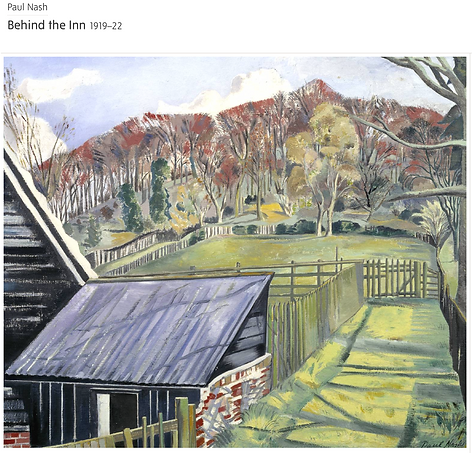Jessica Frank
VP Andy Cantouris
Tutor Swap - Research
After having my tutor swap session with Emily Anderson she stressed that I needed to focus on building my research up and gave me loads of artists and events to look into, but also suggested looking at landscape within paintings and some more historical landscape painters. So this week I have focused more on research rather than shooting as I have a shoot planned for the weekend.
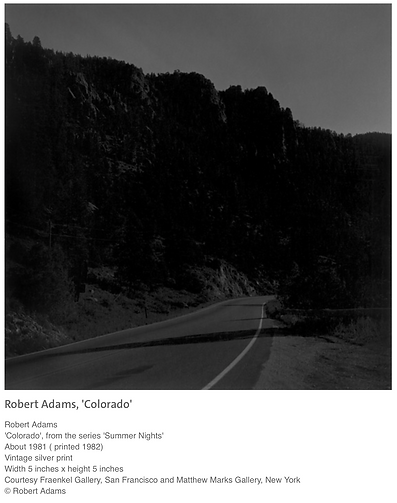

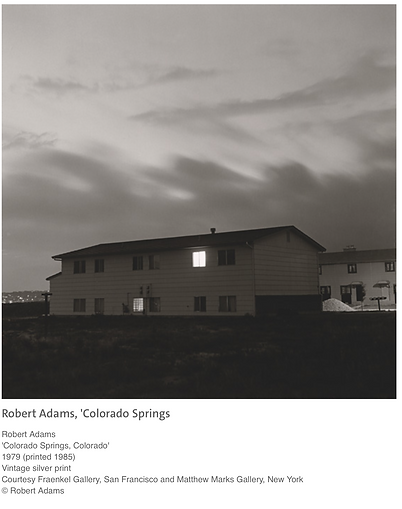



'Still photographs often differ from life more by their silence than by the immobility of their subjects. Landscape pictures tend to converge with life, however, on summer nights, when the sounds outside, after we call in children and close garage doors, are small - the whir of moths, the snap of a stick.'
Adams is best known for his series of photographs that investigates urban encroachment into the landscape of the American West. In much of his work, Adams balances a sense of hope for Nature's persistence against despair with man's destruction of what was, until relatively recently, wilderness. This are captured in twilight in the summer where it can sometimes occur through the night. I love the idea of shooting at this time however due to the time of the year it wouldn't be possible for a while, however this is something I will try for this project theme at a later date it gives such a heavy atmosphere with the dark colours but this approach complements the work perfectly.
Robert Adams
Robert Adams was recommended as someone to look at and I'm so glad I did. I was struggling to find other photographers addressing and capturing the issue with the urban and rural world and the affect thats being inflicted upon nature due to the urban culture. Below are some examples of his work:
Layering the urbanised small town of Shin-Fuji with the natural beauty of Mount Fuji, Riddy contrasts the polar opposites - rural and urban, old and new, natural and artificial - for which modern Japan is famous. -V&A

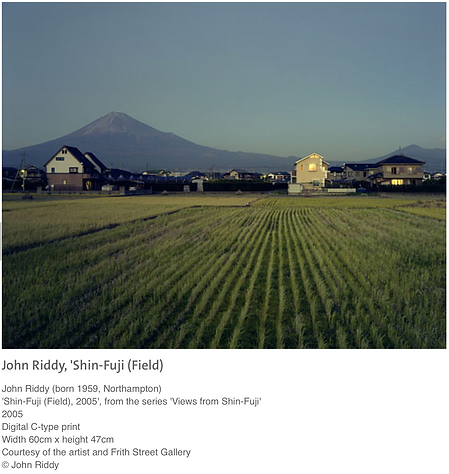

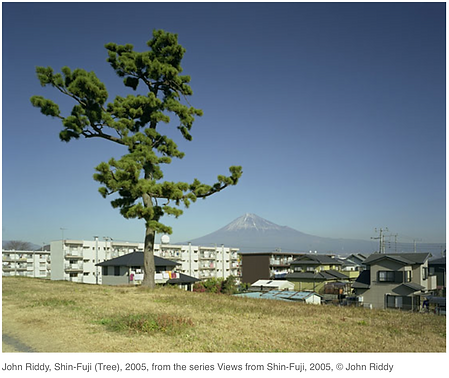
John Riddy
I like this work by Riddy, he focuses more on the dominence of the small town even though its so small. He does this by situated the mountain in the distance making it a lot less dominate. This may be a possibility for a future shoot depending on if I can find a suitable location.
Jem Southam
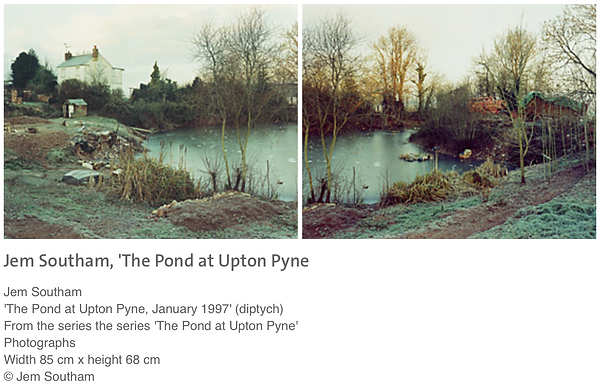
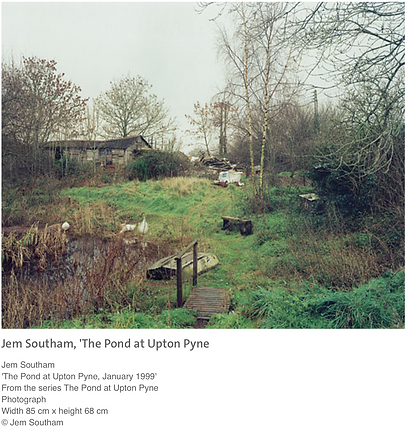

Southam's subjects are predominately situated in the South West of England where he lives and works. He observes the balance between nature and man's intervention and traces cycles of decay and renewal. His work combines topographical observation with other references: personal, cultural, political, scientific, literary and psychological. Southam's working method combines the predetermined and the intuitive. Seen together, his series suggest the forging of pathways towards visual and intellectual resolution.
Southam looks at places over a period of time and the balance between nature and mans intervention I love this work because it focuses more on the rural areas closer to home and that are situated within our urban enviroments for example large gardens, land and ponds. I particulary like the top images shown as a dyptic. Again he uses colour this is deffinatly something I want to try on my next shoot.
Nash found much inspiration in landscapes with elements of ancient history, such as burial mounds, Iron Age hill forts such as Wittenham Clumps and the standing stones at Avebury in Wiltshire. The artworks he produced during World War One are among the most iconic images of the conflict. After the war Nash continued to focus on landscape painting, originally in a formalized, decorative style but, throughout the 1930s, in an increasingly abstract and surreal manner.[3] In his paintings he often placed everyday objects into a landscape to give them a new identity and symbolism.
I felt it was important to research and address landscape painters as these preceded the photographers of landscape. And highly influential landscape and war painter was Paul Nash above are the two pieces of his which called out to me most, especially for what I'm looking at. I feel his work carries a heavy atmosphere and even more so once you've read up on his bio as well on the description on the works. The attempt by Nash to integrate his work into modern life was prompted by an avante-gardist desire to engage with audiences outside the normal gallery context.

